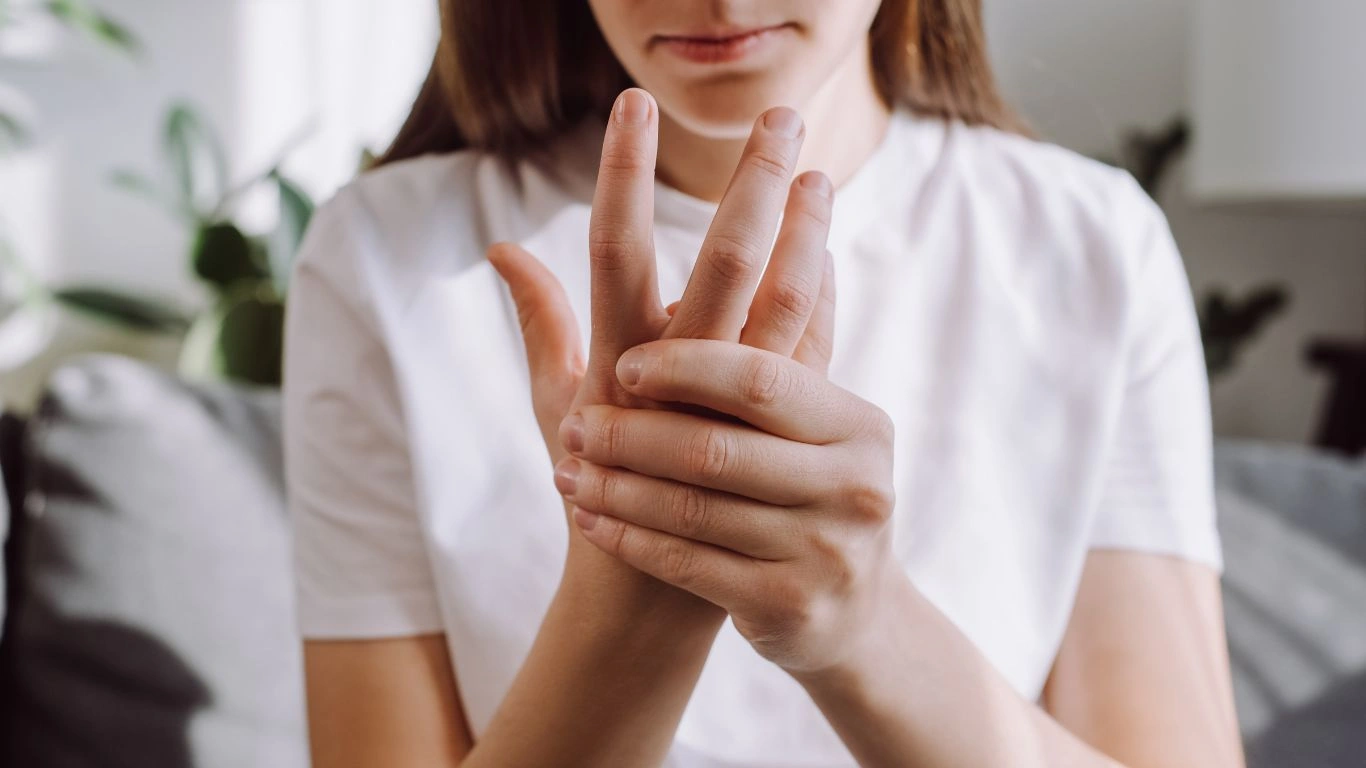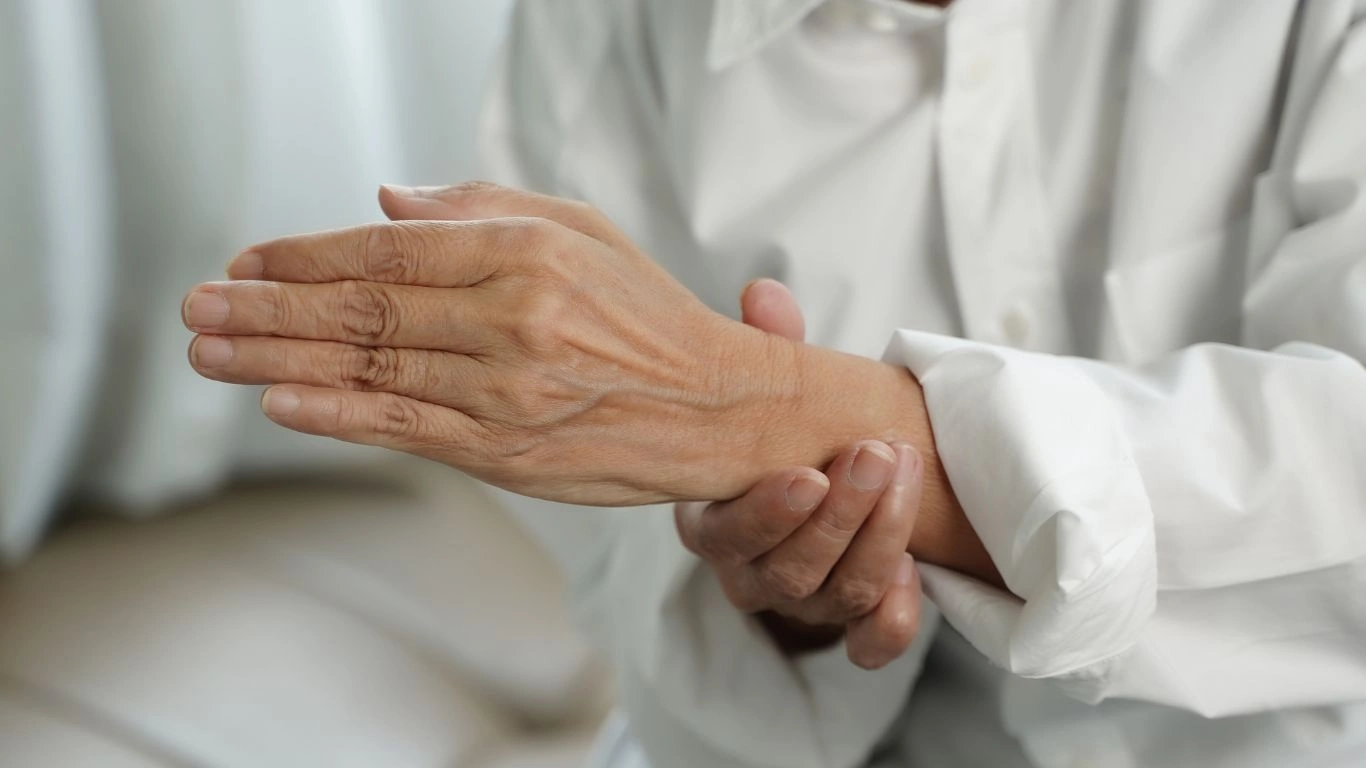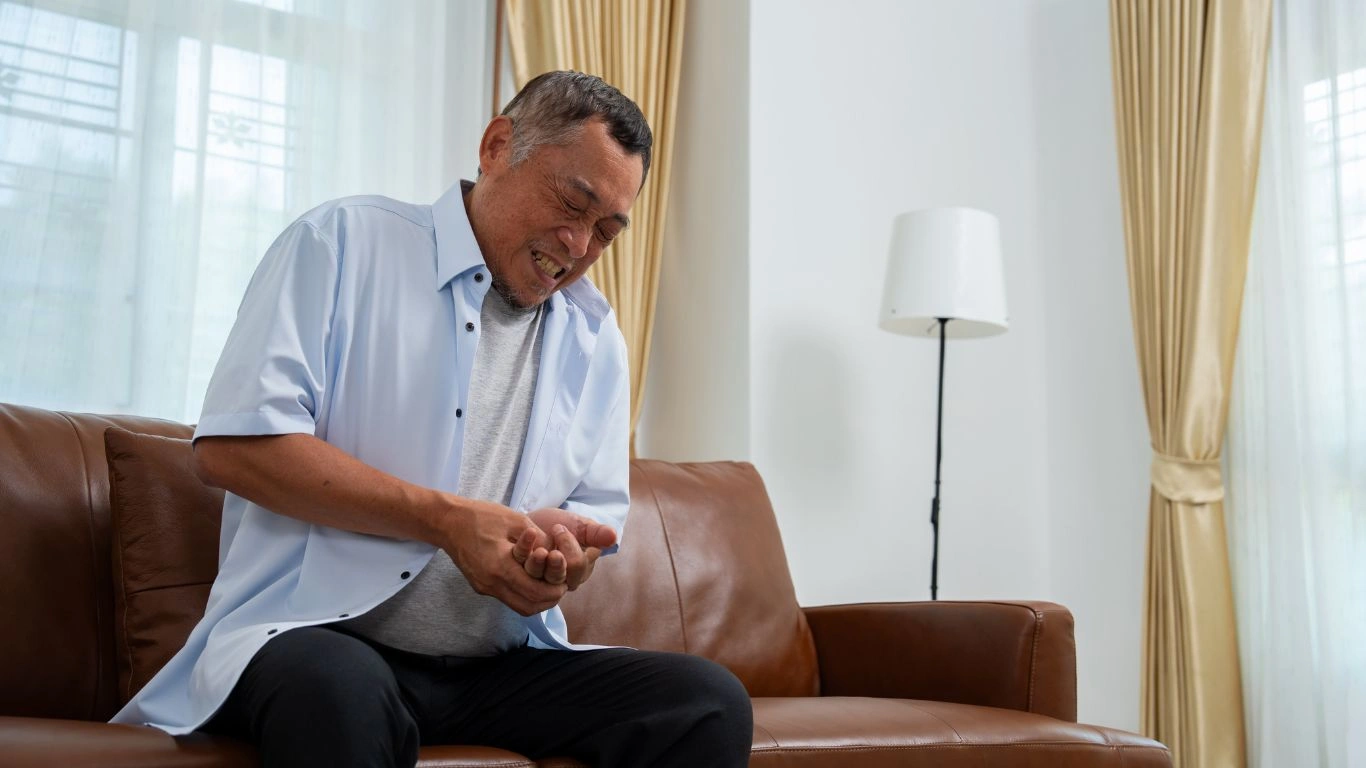Discover the Benefits of Yoga for Rheumatoid Arthritis Relief
Living with rheumatoid arthritis (RA) can be a daily challenge. As a rheumatoid arthritis expert, I’ve seen firsthand how debilitating the pain, swelling, and stiffness can be for individuals managing this chronic condition. However, over the years, I’ve discovered a holistic approach that many find immensely beneficial—yoga. You might be wondering, “How could yoga help with rheumatoid arthritis and pain management?” Let me tell you, it’s not just about flexibility and stretching; it’s about connecting your body, mind, and spirit in a way that offers genuine relief. In this article, we’ll explore the relationship between rheumatoid arthritis and the benefits of yoga for pain management, shedding light on how this ancient practice can become a powerful tool in managing RA symptoms.
Understanding Rheumatoid Arthritis: A Brief Overview

Rheumatoid arthritis is an autoimmune condition that primarily affects the joints, causing inflammation, pain, and stiffness. Unlike osteoarthritis, which is caused by wear and tear, RA occurs when the immune system mistakenly attacks the body’s healthy tissues, specifically the synovium (the lining of the joints). Over time, this leads to joint damage and deformities. RA is typically a chronic condition, and its symptoms can fluctuate, making daily life difficult for those affected.
Some of the common symptoms of RA include:
- Joint pain and swelling
- Stiffness, especially in the mornings
- Fatigue
- Loss of range of motion
- Fever and weight loss (in severe cases)
RA commonly affects joints in the hands, wrists, knees, and feet, but it can involve any joint in the body. While there’s no cure for rheumatoid arthritis, the focus is on managing symptoms and improving quality of life. This is where yoga can play a crucial role in your treatment plan.
Why Yoga Works for Rheumatoid Arthritis Pain Management

As someone who’s worked with many RA patients over the years, I’ve seen how yoga can transform someone’s experience with this chronic condition. You might be surprised to learn that yoga is not just about doing poses and breathing exercises—it’s a comprehensive practice that encompasses movement, mindfulness, and relaxation, all of which are essential for those living with RA.
Yoga helps in several ways:
- Improved Flexibility and Joint Mobility: Many people with RA struggle with joint stiffness and limited range of motion. Regular yoga practice includes gentle stretching, which helps to improve flexibility and maintain joint mobility, making everyday activities easier to perform.
- Pain Reduction: The combination of movement and controlled breathing in yoga helps reduce pain by releasing endorphins (the body’s natural painkillers) and reducing inflammation. Additionally, yoga can increase circulation to affected areas, promoting healing.
- Strength Building: Building strength in the muscles surrounding the joints can provide better support, reducing strain on affected areas. This is especially important for people with RA, as weakened muscles can exacerbate pain.
- Mind-Body Connection: RA can be mentally and emotionally taxing. Yoga promotes mindfulness, helping individuals cope with the emotional burden of chronic pain. Meditation and breathwork, often included in yoga practices, help in stress reduction and relaxation.
Key Benefits of Yoga for RA Patients
When I first introduced yoga to some of my RA patients, many were hesitant. But after incorporating yoga into their routines, they reported noticeable improvements. These benefits can be truly life-changing, and they go beyond physical pain relief. Here’s how yoga can benefit people with rheumatoid arthritis:
1. Reduced Pain and Stiffness
One of the most immediate and rewarding benefits of yoga is pain relief. While yoga may not eliminate pain entirely, it can reduce it significantly. Gentle stretching helps to relax the muscles around the joints, easing tension and discomfort. The movements also help in lubricating the joints, which can reduce stiffness. This is particularly important for those with RA, where stiffness tends to be worse in the mornings.
2. Enhanced Mental Well-being
Chronic pain can take a toll on your mental health, leading to stress, anxiety, and even depression. Yoga’s emphasis on breathwork and mindfulness can be incredibly therapeutic in alleviating these mental and emotional burdens. By focusing on the present moment, yoga practitioners can experience a sense of calm, reducing the mental strain associated with RA.
3. Improved Sleep
Rheumatoid arthritis can often disrupt sleep due to pain and discomfort. However, yoga can improve sleep quality. The relaxation techniques taught in yoga, such as deep breathing and meditation, help activate the parasympathetic nervous system (the “rest and digest” system), promoting better sleep. Many RA patients report falling asleep more easily and staying asleep longer after incorporating yoga into their routine.
4. Increased Flexibility and Strength
Yoga can help RA patients increase their flexibility by gently stretching the body, reducing muscle tension. Regular practice can also strengthen the muscles that support the joints, which can help reduce the load on painful joints and prevent further damage. This can improve overall mobility and functionality, making it easier to perform daily tasks.
Ultimately, incorporating yoga into your routine provides a holistic approach to managing rheumatoid arthritis. It’s not just about treating the symptoms; it’s about improving your quality of life by addressing the physical, mental, and emotional aspects of living with a chronic condition. The beauty of yoga is that it’s adaptable to everyone’s needs. Whether you’re new to yoga or have practiced for years, it can be tailored to suit your individual abilities and limitations.
The Science Behind Yoga’s Impact on Rheumatoid Arthritis
Research has increasingly shown that yoga can offer significant benefits for those with rheumatoid arthritis. A number of studies have explored yoga’s effects on pain, inflammation, and mobility, with promising results. For instance, a study published in the journal *Rheumatology International* found that regular yoga practice led to significant improvements in pain levels, joint function, and emotional well-being for individuals with RA.
Yoga’s ability to reduce stress is another reason it’s so beneficial for people with autoimmune conditions like RA. Chronic stress can worsen inflammation in the body, and by reducing stress levels, yoga can help in controlling inflammation and its negative impact on the joints.
Yoga is not a replacement for conventional treatments, but it can be a wonderful complementary therapy. In my experience, combining yoga with traditional medical treatments—such as medications and physical therapy—offers a well-rounded approach to managing rheumatoid arthritis.
How to Incorporate Yoga Into Your Rheumatoid Arthritis Management Plan

Now that we’ve explored the many benefits of yoga for rheumatoid arthritis, you may be wondering, “How do I get started?” It’s a valid question, and I completely understand the hesitation. As someone who’s worked with many RA patients, I know how overwhelming it can be to try something new, especially when dealing with pain and stiffness. But I can assure you, yoga can be incredibly gentle and accommodating for individuals with RA. The key is to listen to your body, start slow, and modify poses as needed.
Here are some tips to help you incorporate yoga into your rheumatoid arthritis management plan:
1. Start with Gentle, Modified Yoga Poses
When you’re new to yoga, it’s essential to begin with simple and modified poses that won’t put too much strain on your joints. There’s no need to rush into advanced poses—take your time and honor your body’s limits. A great way to start is with chair yoga or restorative yoga, which focus on slow movements and deep stretches.
Some gentle poses you can try include:
- Child’s Pose: This is a restful position that gently stretches the lower back and hips. It’s great for relieving tension.
- Cats and Cows: These movements help loosen up the spine and increase mobility in the neck and back.
- Seated Forward Fold: This stretch targets the hamstrings and lower back without putting pressure on the knees or hips.
As you become more comfortable with these poses, you can gradually increase the intensity. The goal isn’t to push yourself into discomfort but to find a range of movement that works for you.
2. Use Props to Support Your Practice
Yoga props like blocks, straps, and bolsters are fantastic tools for supporting your body as you practice. If you’re dealing with limited flexibility or stiffness, props can provide the extra support you need to hold poses longer and with greater ease. For example, using a yoga block under your hands in a downward dog can bring the floor closer to you, making the pose more accessible. A bolster can be placed under your knees in a restorative pose to provide cushioning and relieve pressure.
Props can also help you modify poses to reduce strain on your joints, which is key when practicing yoga with rheumatoid arthritis.
3. Focus on Breathing and Mindfulness
Yoga isn’t just about physical movement—it’s also about cultivating mindfulness and connecting with your breath. This is especially important for RA patients, as stress can trigger flare-ups and make symptoms worse. By focusing on your breath, you activate your parasympathetic nervous system, which promotes relaxation and reduces inflammation.
When you practice yoga, take deep, slow breaths to help calm your nervous system. Inhale through your nose, allowing your lungs to expand fully, and exhale through your mouth, releasing tension with each breath. This breathing technique is called “pranayama” in yoga, and it can make a significant difference in how you manage both pain and stress.
4. Attend Classes or Work with a Yoga Therapist

If you’re unsure where to start or if you’re worried about doing the poses incorrectly, attending a yoga class designed for people with rheumatoid arthritis can be a great option. Many yoga studios offer gentle classes tailored to individuals with chronic conditions, focusing on pain relief, mobility, and relaxation. These classes are usually led by experienced instructors who understand the specific challenges RA patients face.
Alternatively, you could work one-on-one with a certified yoga therapist. These professionals are trained to create personalized yoga practices that meet your individual needs and limitations. They’ll guide you through the poses and teach you modifications to ensure your safety while getting the most benefit from your practice.
5. Be Patient and Consistent
One thing I always emphasize to my patients is the importance of patience. Yoga isn’t a quick fix. It’s a journey, and progress comes gradually. Don’t get discouraged if you don’t see immediate results. The beauty of yoga is that, with regular practice, the benefits compound over time. Just like any other form of exercise, consistency is key. Start by practicing yoga for just 10-15 minutes a few times a week, and gradually increase the duration as you feel more comfortable.
In my experience, many RA patients who stick with yoga start noticing improvements after a few weeks. These improvements might not always be dramatic, but they’re noticeable: a reduction in stiffness, better flexibility, or even an improved mood. Over time, these small wins add up and make a big difference in how you feel day-to-day.
Yoga Styles and Techniques for RA Relief

There are several different styles of yoga, and some are particularly well-suited for individuals with rheumatoid arthritis. Here’s a breakdown of a few styles that might work for you:
Restorative Yoga
Restorative yoga is a gentle, soothing style that focuses on relaxation and healing. It involves holding poses for longer periods (usually 5-10 minutes) with the support of props like blankets, bolsters, and blocks. This style of yoga is excellent for those with RA because it helps calm the nervous system, reduces stress, and gently stretches the body without pushing it too hard.
Chair Yoga
Chair yoga is a wonderful option for individuals with RA, especially those with limited mobility or who find it difficult to get down on the floor. As the name suggests, chair yoga involves performing yoga poses while seated in a sturdy chair or standing while using the chair for support. It’s a fantastic way to get the benefits of yoga without putting excess strain on the joints.
Hatha Yoga
Hatha yoga is a slower-paced form of yoga that focuses on physical postures and breathing. It’s perfect for RA patients because it allows for modifications and emphasizes alignment and safety. Hatha classes often incorporate a balance of gentle stretches and strengthening poses, which can help increase flexibility and build muscle strength around affected joints.
When choosing a yoga style, think about your needs and what feels most comfortable for your body. The goal is to find a practice that supports your health and helps manage your RA symptoms, not one that leaves you feeling frustrated or in pain.
Remember, yoga is not about perfection—it’s about progress. So, go at your own pace, listen to your body, and don’t be afraid to modify poses as needed. With time and consistency, you’ll likely experience the many benefits yoga has to offer, from pain relief to improved flexibility and mental well-being.
Incorporating Lifestyle Changes for Enhanced RA Management with Yoga

When it comes to managing rheumatoid arthritis, yoga is just one piece of the puzzle. While it offers incredible benefits, incorporating a holistic approach that includes other lifestyle changes is crucial for optimizing your health. In my experience, patients who embrace a well-rounded lifestyle—combining yoga with other healthy habits—are able to manage their RA symptoms more effectively and enjoy a better quality of life.
Yoga can absolutely be part of that equation, but it’s also important to consider factors like nutrition, rest, and stress management. Let’s explore how these elements, when paired with yoga, can work together to enhance your rheumatoid arthritis management plan.
1. Nutrition and Its Role in Managing Inflammation
One thing I’ve noticed with many of my RA patients is that the foods they eat can have a significant impact on their symptoms. Inflammation is a core issue with rheumatoid arthritis, and certain foods can either trigger or help reduce that inflammation. A well-balanced, anti-inflammatory diet can support your yoga practice and overall RA management.
Here are some dietary tips to help manage RA inflammation:
- Omega-3 Fatty Acids: Foods rich in omega-3s, like fatty fish (salmon, mackerel), flaxseeds, and walnuts, have been shown to reduce inflammation. Incorporating these into your diet can help ease joint pain.
- Antioxidants: A diet high in fruits and vegetables (especially leafy greens and berries) can help fight oxidative stress, which contributes to inflammation in the body. Aim for colorful meals—think red, green, purple, and orange.
- Spices like Turmeric and Ginger: Both of these have natural anti-inflammatory properties. Try adding turmeric to your soups or smoothies, or brew a ginger tea for a soothing, anti-inflammatory drink.
- Avoiding Processed Foods: Highly processed foods, sugary snacks, and refined carbohydrates can increase inflammation. Consider reducing your intake of these and focus more on whole, unprocessed foods.
I always tell my patients that good nutrition isn’t just about what you cut out of your diet—it’s about what you add in. A well-rounded, anti-inflammatory diet can complement your yoga practice, support joint health, and reduce overall inflammation, making it easier to manage your RA symptoms.
2. The Importance of Rest and Recovery
RA can leave you feeling fatigued and drained. While yoga can help boost energy and improve sleep quality, it’s also essential to give your body the rest it needs. I’ve worked with many RA patients who are often guilty of pushing through fatigue or ignoring their body’s need for rest. But overexerting yourself can lead to flare-ups, which can make things even worse.
Proper rest and recovery are vital components of any RA management plan. When you’re practicing yoga, it’s important to listen to your body and take breaks as needed. Pay attention to signs of overexertion, such as increased pain, swelling, or fatigue, and don’t hesitate to rest if your body is telling you it’s time to slow down.
In addition to practicing yoga, make sure you’re prioritizing quality sleep. Sleep is critical for healing, and chronic sleep deprivation can exacerbate RA symptoms. Try to establish a regular sleep routine, create a calming bedtime environment, and focus on getting enough rest each night. Aim for 7-9 hours of sleep each night to give your body the chance to recover and repair.
3. Managing Stress for Better Symptom Control
Stress is one of the most significant triggers for RA flare-ups, and unfortunately, it’s a common factor in many people’s lives. But managing stress effectively can make a huge difference in how you feel on a day-to-day basis. Yoga, of course, is a powerful tool for stress reduction, but there are other ways to manage stress that can enhance your RA treatment plan.
Here are some stress management techniques to consider:
- Meditation: Like yoga, meditation helps calm the mind and activate the body’s relaxation response. Even just a few minutes of mindfulness each day can help reduce stress and inflammation.
- Breathing Exercises: Simple deep-breathing techniques can lower cortisol (the stress hormone) and trigger the body’s relaxation response. Try inhaling for four counts, holding for four counts, and exhaling for four counts to quickly calm your nervous system.
- Journaling: Sometimes, writing down your thoughts can be a great way to relieve mental clutter. Journaling about your experiences with RA and how you’re feeling can help you process emotions and reduce stress.
Yoga, when combined with these stress management techniques, can significantly improve your ability to cope with the emotional and mental toll of RA. This holistic approach can help you feel more balanced and in control of your condition.
Seeking Support: Yoga and Community for RA

Living with rheumatoid arthritis can sometimes feel isolating. But yoga offers not only physical benefits but also an opportunity to connect with others who are going through similar experiences. Many yoga communities offer group classes specifically for individuals with chronic conditions like RA. These classes can be incredibly supportive, providing a sense of camaraderie and understanding that you’re not alone in your journey.
Additionally, finding a support group—either in-person or online—can provide a much-needed outlet for sharing your experiences, tips, and challenges. When dealing with a chronic condition, it’s crucial to have a strong support system. Yoga communities, online forums, and RA-specific groups can provide emotional support and practical advice as you navigate your treatment plan.
In my experience, having a support network can make all the difference. Yoga not only helps your body but also offers a community that understands your struggles, which can be incredibly healing.
References and Additional Resources
For further information on rheumatoid arthritis and the benefits of yoga, you may find these resources helpful:
- Health Usias – For more articles on health and wellness, including rheumatoid arthritis management and yoga practices.
- American College of Rheumatology – A trusted source for research and treatment guidelines on rheumatoid arthritis.
- Yoga Journal – A comprehensive resource for yoga poses, articles, and tips on incorporating yoga into your life.
Disclaimer
The information provided in this article is intended for educational purposes only and is not a substitute for professional medical advice. Please consult with your healthcare provider before starting any new exercise or treatment program, including yoga, especially if you have a chronic condition like rheumatoid arthritis.
Always listen to your body and make adjustments to your yoga practice as needed. Yoga can be a powerful tool for pain management and overall wellness, but it’s essential to approach it with caution and care, particularly when managing a condition like rheumatoid arthritis.

Tarra Nugroho is a dedicated Nurse Practitioner with a strong foundation in family and preventive care. She brings both compassion and clinical expertise to her practice, focusing on patient-centered care and health education. As a contributor to Healthusias.com, Tarra translates medical knowledge into clear, empowering articles on topics like women’s health, chronic disease management, and lifestyle medicine. Her mission is simple: help people feel seen, heard, and informed—both in the clinic and through the content she creates. When she’s not caring for patients, Tarra enjoys weekend hikes, plant-based cooking, and curling up with a good health podcast.






